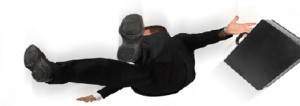 Most often when people think about false imprisonment, they think about people being falsely arrested by the police. Most people don’t know that non-police officers can be liable for false imprisonment under many different circumstances.
Most often when people think about false imprisonment, they think about people being falsely arrested by the police. Most people don’t know that non-police officers can be liable for false imprisonment under many different circumstances.
The purpose of this article is to give a brief synopsis of the civil tort of false imprisonment in the state of California.
A basic definition of civil false imprisonment is; “a person intentionally holding another person within the bounds of a fixed area, without the consent of the person being held, and without a privilege that would excuse the conduct.”
For instance, let’s say that a man locks a woman in a room without her permission. This would be a classic case of civil false imprisonment.
Another example would be a person holding something of value to another person with the intent to make them stay in a certain place, and without the consent of the person whose valuables are being held.
Civil false imprisonment could also include one person grabbing onto another person without their consent, and holding them so that they cannot leave.
There are many other examples of false imprisonment that I can provide, however, the above examples are meant to give you an idea of what the civil tort of false imprisonment is in the state of California.
One key element of the civil tort of false imprisonment is that the person being held must reasonably believe that they cannot leave. Reasonable is a legal term of art used in the legal world. What reasonable basically means is: what would a reasonable prudent person do or believe under similar circumstances.
Another key element of the tort of false imprisonment is that the person doing the imprisoning, must not have a privilege to do so.
Examples of privileges that would allow a person to hold another person within the bounds of a fixed area are: shopkeepers who are investigating shoplifting at a store; civilians who have witnessed a felony, and place the person who committed a felony under citizen’s arrests; or police officers who have probable cause to believe that a crime has been committed.
As with other intentional torts, victims of false imprisonment are entitled to not only compensatory damages, but they may also recover punitive damages. (Punishment)
If you feel you have been the victim of a false imprisonment in the state of California, feel free to call me for a free consultation at 818-584-8831 extension 1, or you may go to my personal injury website by clicking here now.
If you feel that you may have been the victim of a false imprisonment outside of the state of California, I highly recommend you consult with an attorney in your state and/or area.
By Norman Gregory Fernandez, ESQ. , Copyright 2006


 A slip and fall, and or trip and fall case is pretty much self explanatory. The case arises from a person slipping and/or tripping and falling, and sustaining injuries as a result.
A slip and fall, and or trip and fall case is pretty much self explanatory. The case arises from a person slipping and/or tripping and falling, and sustaining injuries as a result. A wrongful death case is a case where a person dies due to the intentional or negligent act of another, or entity. The law allows relatives, domestic partners, and persons who depend upon the wrongful death victim for support to sue for wrongful death. The issue of who can sue for wrongful death is covered below.
A wrongful death case is a case where a person dies due to the intentional or negligent act of another, or entity. The law allows relatives, domestic partners, and persons who depend upon the wrongful death victim for support to sue for wrongful death. The issue of who can sue for wrongful death is covered below. As a lawyer, I evaluate many factors before I decide to a take Motorcycle, Car, or other Motor Vehicle injury accident cases on a contingency basis.
As a lawyer, I evaluate many factors before I decide to a take Motorcycle, Car, or other Motor Vehicle injury accident cases on a contingency basis. Under Insured insurance coverage will cover you for the difference between your actual damages, and the at fault persons insurance coverage.
Under Insured insurance coverage will cover you for the difference between your actual damages, and the at fault persons insurance coverage. I have heard many people throw the term of assault around to describe someone being physically abused. The purpose of this article is to describe what the civil tort of assault and the civil tort of battery are in plain language.
I have heard many people throw the term of assault around to describe someone being physically abused. The purpose of this article is to describe what the civil tort of assault and the civil tort of battery are in plain language. The name speaks for itself. This type of insurance coverage will cover you for your “non-property” related damages (Bodily Injury, Pain and Suffering, Loss of Enjoyment of Life, Emotional Distress) in a Car or Motorcycle injury accident, if the other motorist who is “at fault,” has no liability insurance.
The name speaks for itself. This type of insurance coverage will cover you for your “non-property” related damages (Bodily Injury, Pain and Suffering, Loss of Enjoyment of Life, Emotional Distress) in a Car or Motorcycle injury accident, if the other motorist who is “at fault,” has no liability insurance.